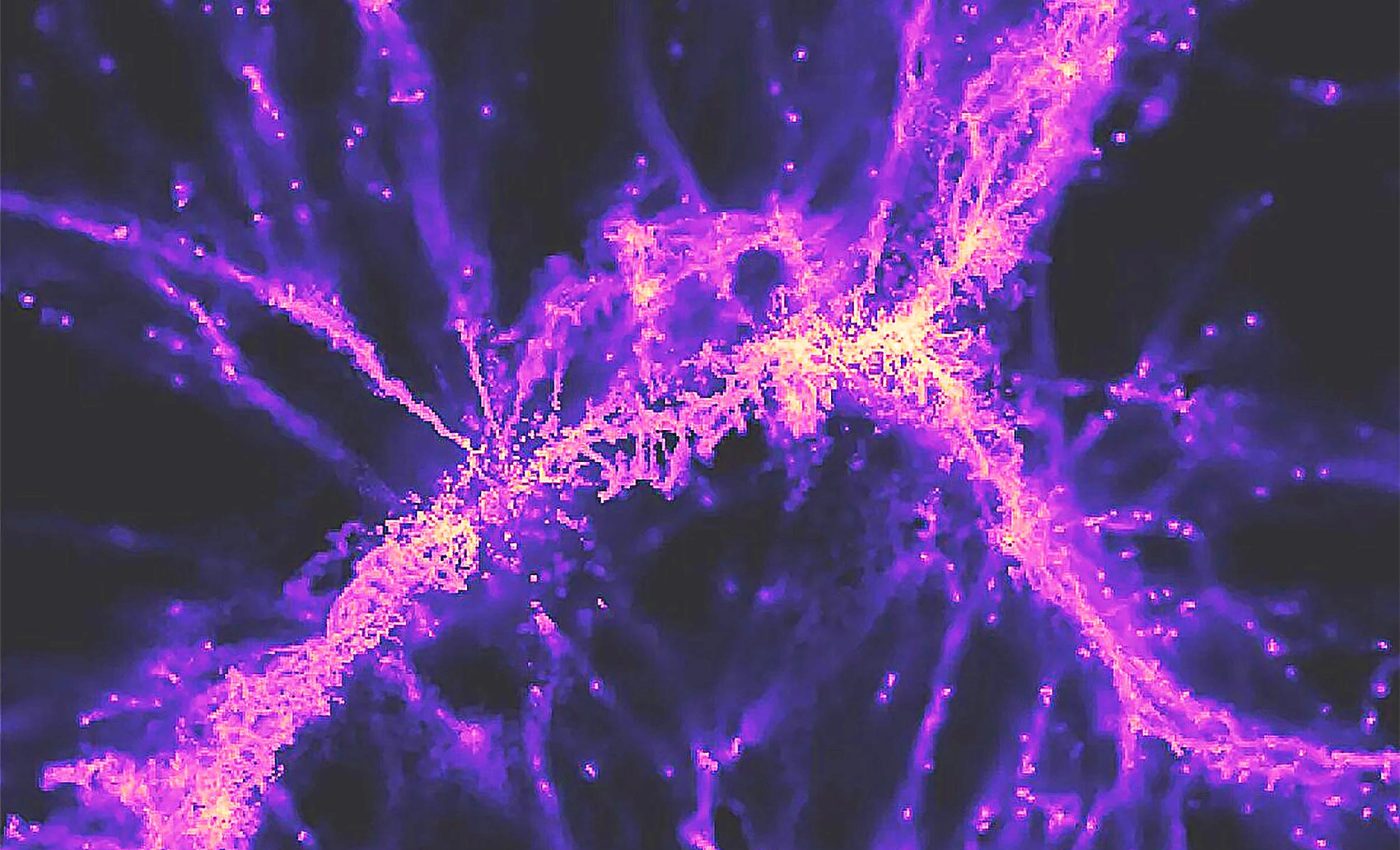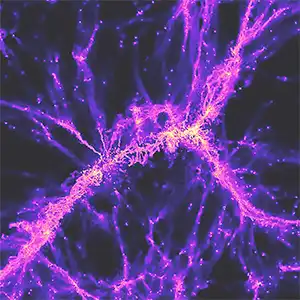
Universe's hidden highways revealed in the first direct image of the 'cosmic web'
Space isn’t empty at all. It’s threaded with wisps of matter so thin that even the best telescopes struggle to see them. Astronomers call this vast network the cosmic web. It is the hidden skeleton that anchors galaxies and steers their growth.
Until recently, the web’s finest filaments existed only in computer models and educated guesses. Now, a fresh observation has pulled one filament out of theory and placed it squarely in view.
The sighting comes from a patch of sky where two ancient quasars burn more than 11 billion light-years away. Their brilliance backlights a faint bridge of hydrogen that stretches between them.
Spotting the bridge required hundreds of telescope hours and instruments designed for forensic astronomy.
Fresh light on cosmic web
An international team led by the University of Milano-Bicocca partnered with the Max Planck Institute for Astrophysics to focus on those twin quasars.
Each galaxy harbors a ravenous black hole, and both sit in an era when the universe was just about 2 billion years old.
The researchers caught the slender strand linking the galaxies and traced it across roughly 3 million light-years.
They relied on the Multi-Unit Spectroscopic Explorer, or MUSE, mounted on the European Southern Observatory’s Very Large Telescope (VLT) in Chile.
MUSE collects spectra for every pixel in its field of view, letting astronomers separate the filament’s weak hydrogen emission from background noise.

Threading young galaxies together
Because light takes time to travel, the image captures the cosmos in its youth. The faint filament shows gas flowing along a gravitational highway toward the galaxies’ outskirts, known as the circumgalactic medium.
This flow is the raw material for future stars. Seeing it directly confirms a key prediction of so-called cold dark matter theories: galaxies grow by siphoning gas along web-like funnels rather than by gulping down isolated clouds.
Cold dark matter also predicts that about 85 percent of the universe’s matter is invisible to ordinary telescopes.
The filament gives scientists a new handle on that unseen mass because its brightness depends on the density of surrounding dark matter.
Matching observations to models sharpens estimates of how much ordinary gas the dark component corrals.
Tooling up with MUSE
“By capturing the faint light emitted by this filament, which traveled for just under 12 billion years to reach Earth, we were able to precisely characterize its shape,” explains Davide Tornotti, Ph.D. student at the University of Milano-Bicocca and leader of this study.
“For the first time, we could trace the boundary between the gas residing in galaxies and the material contained within the cosmic web through direct measurements.”
The study pushed MUSE to its limits. Over several observing seasons, the instrument collected data for more than 100 hours on the same celestial turf.
That long stare produced an image so sharp that the team could map brightness variations along the filament and compare them pixel by pixel with supercomputer predictions.
From simulation to the sky
Those simulations, run at the Max Planck Institute, treated gravity as the architect that gathers dark matter into an endless scaffold. Ordinary gas then rides the scaffold like morning mist settling into valleys.
When the researchers overlaid the synthetic filament onto the observed one, the agreement was striking.
Fine details in the glow lined up with knots in the model, suggesting the computers had captured nature’s design with impressive fidelity.
The match also offers a reality check for theories that tweak dark matter’s behavior. Any alternative model must now reproduce the same filament brightness and density without breaking the wider web.
In this way, a single strand observed in high definition becomes a crucial yardstick for cosmic structure.

How filaments feed galaxies
Gas flowing along filaments doesn’t just end up in stars; it shapes how galaxies look. Streams deliver fresh hydrogen to their disks, fueling spiral arms, bursts of radiation, and chemical enrichment.
Without steady inflow, galaxies would exhaust their gas in a few hundred million years and fade.
The new image shows that inflow happens early and on grand scales. It also reveals a clean boundary where intergalactic gas transitions into material bound to the galaxies themselves.
Pinpointing that boundary helps explain why some galaxies keep forming stars while others stop and turn red.
Road ahead for the cosmic web
“We are thrilled by this direct, high-definition observation of a cosmic filament. But as people say in Bavaria: ‘Eine ist keine’ – one doesn’t count,” concludes Fabrizio Arrigoni Battaia, MPA staff scientist involved in the study.
“So we are gathering further data to uncover more such structures, with the ultimate goal of having a comprehensive vision of how gas is distributed and flows in the cosmic web.”
Future studies will benefit from next-generation instruments such as the Extremely Large Telescope’s planned high-resolution spectrographs.
Wider surveys will look for more filaments, sketching a full-scale map of the universe’s scaffolding and revealing how common these luminous threads are.
Together with the first detection, each new strand will tighten constraints on dark matter physics and galaxy evolution.
For now, the filament between two blazing quasars stands as the sharpest picture ever taken of the web that holds the cosmos together. It shows gas moving along a spider-silk highway, feeding galaxies in their formative years.
More importantly, it proves that patient observation can light up structures once dismissed as beyond reach. As astronomers stack up additional strands, a clearer portrait of our universe’s hidden framework will emerge, one faint glow at a time.
The study is published in the journal Nature Astronomy.
Image Credit: Alejandro Benitez-Llambay/Universität Mailand-Bicocca/MPA
—–
Like what you read? Subscribe to our newsletter for engaging articles, exclusive content, and the latest updates.
Check us out on EarthSnap, a free app brought to you by Eric Ralls and Earth.com.
—–













